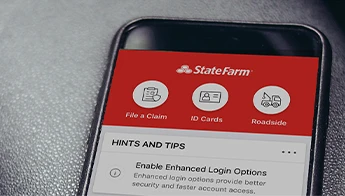Electric car insurance helps make it easier going green
As sales of electric cars increase and legislation drives closer to curbing emissions, you may be looking for a more eco-friendly vehicle. After all, vehicle battery range and charging options improve yearly. Combine that with the variety of electric vehicle models and it’s becoming a viable option to traditional gas-powered ones.
Do electric vehicles cost more to insure?
If you’re interested in purchasing an electric car, consider these key reasons why it may be more expensive to insure:
Higher purchase price
Since electric vehicles typically cost more to buy, they cost more to replace.
More expensive to repair
Newer technology can be costly and battery replacement could cost $5,000 to $15,000, which doesn’t include the cost of labor. Additionally, since the technology is newer, there are fewer technicians trained to fix them.
Are coverages different for an electric car or truck?
Essentially, insurance coverage is available in all states and is similar for both electric cars and those with gas or diesel engines.
Are there electric car insurance savings?
State Farm® has several possible discounts and savings for auto insurance that would also include policies on EV cars. To see if you qualify for those discounts or if the discounts are available in your state, please talk with a State Farm agent. Some of the discounts offered to qualifying policyholders include:
Good Student
Bundle and save
Drive Safe & Save®
Based on how you drive, get an auto insurance discount with Drive Safe & Save.3
Steer Clear®
Our Steer Clear program helps teens and drivers improve their skills and earn a discount.4
Why choose State Farm for electric vehicle coverage?
We do this every day
On average, we handle 28,000+ claims daily.
We’re here 24/7/365
The State Farm app is rated 4.8/5 with 1M+ reviews in the App Store.
Insuring cars since 1922
We’re bringing over 100 years of experience to help you recover from the unexpected.
Local insurance agents
Across the nation, State Farm has over 19,000 auto insurance agents dedicated to providing you with personalized service. Reach out to one near you.
State Farm in action
Did you know State Farm is committed to cutting its greenhouse emissions in half by 2030?5
Frequently asked questions about electric car insurance
No, since these stations typically run on 110 or 220 volts which is standard for most residences. However, installation may require an electrician if you need an additional breaker.
Maybe you left in a hurry, or didn’t find a charging station along your route, but your electric car needs a charge. If your State Farm auto policy includes emergency road service, your insurance could pay the fair cost for help, such as towing to the nearest place where your vehicle can be charged. It’s also possible the roadside service provider has a portable electric car charger to get you running again.
You may not need to pay for additional coverage. Your auto policy‘s comprehensive and collision coverages may include equipment that is common to the use of the vehicle, such as charging equipment if damages occurs because of a covered loss. Check with your agent to be sure.
While certain coverages may apply in Mexico if the loss occurs within 50 miles of the U.S. border, this policy does not provide auto insurance coverage in Mexico and does not comply with Mexican auto insurance requirements. If you or any other insured plan to drive in Mexico, then auto insurance providing coverage in Mexico should be purchased from a Mexican insurance company.
Get a local agent who gets you
There’s a State Farm agent nearby ready to offer personalized service to fit your specific needs.

What coverage options are available for electric vehicles?
Typical auto policies can include any of the following:
Simple Insights® on electric vehicles
Looking for help protecting your vehicle? Simple Insights draw on over 100 years of State Farm knowledge around auto insurance.

Having an electronic proof of insurance, also known as a digital ID card, makes 24/7 access to all your insurance information simple.

Use our tool to compare your vehicle to others and see how your car safety ratings, and other factors, affect your insurance premiums.
1 See our Good Student discount, which if your student gets good grades could be as high as 25% and last until they are 25. Your teen's most recent report card might be the key to lowering their premium.
2 Customers may always choose to purchase only one policy but the discount for two or more purchases of different lines of insurance will not then apply. Savings, discount names, percentages, availability and eligibility may vary by state.
3 Discounts may exceed 30% and vary state-to-state (NY capped at 30%). Not available in CA, MA, RI. A discount may not be available in NC depending on individual facts and circumstances. Setup required.
4 Savings, discount names, percentages, availability and eligibility may vary by state.
5 For more see the State Farm 2024 Impact Report.
State Farm (including State Farm Mutual Automobile Insurance Company and its subsidiaries and affiliates) is not responsible for, and does not endorse or approve, either implicitly or explicitly, any third party products or the content of any third party sites referenced in this material. State Farm has no discretion to alter, update, or control the content on the third party sites. Any references to such sites are provided for informational purposes only and are not a solicitation to buy or sell any of the products which may be referenced on such third party sites. State Farm does not warrant the merchantability, fitness, or quality of the third party products referenced in this material.
State Farm Mutual Automobile Insurance Company
State Farm Indemnity Company
Bloomington, IL
State Farm County Mutual Insurance Company of Texas
Richardson, TX